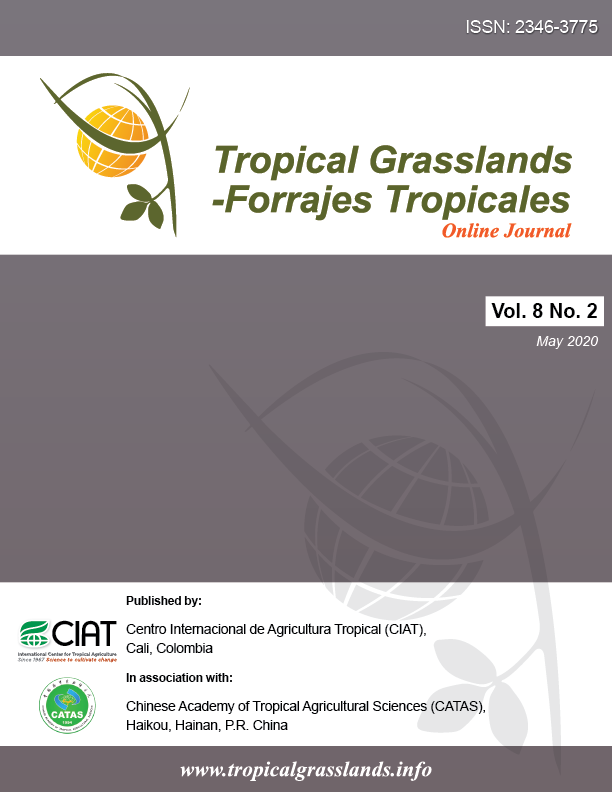The effects of bovine urine application on two soil nitrogen compounds and growth of three forage grasses in the Colombian Piedmont plains
DOI:
https://doi.org/10.17138/tgft(8)105-114Abstract
The effects of application of bovine urine on biomass and nitrogen (N) accumulation in 3 tropical grasses (Urochloa decumbens cv. Basilisk, U. humidicola cv. Humidicola and Megathyrsus maximus cv. Mombasa), and on available N concentrations in soil (NH4+-N, NO3--N) were studied using a randomized complete block design with 3 replicates. There were significant interactions between species and urine application over time in terms of herbage accumulation and N concentration (P<0.01), with significant differences in the concentrations of N available in the soil (P<0.01). Soil temperature and precipitation had important effects on the concentrations of both soil ions. Application of bovine urine increased dry matter accumulation of all grasses in the short term and of U. decumbens over the whole year. Application of urine increased soil N levels, but for U. humidicola and M. maximus the effects were transient. It is necessary to continue with longer-term studies in the Piedmont plains to determine the effects of livestock grazing on the biogeochemical cycles, environmental impacts and natural mitigation options that the ecosystem offers, e.g. CO2 sequestration, biological nitrification inhibitors and organic matter decomposition.




